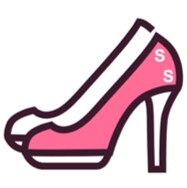
Finding your way through virtual shopping can be intimidating when determining the correct size. Differing from physical shops where garments are testable, web purchases commonly create doubt about how clothing will genuinely sit on your silhouette. Still, remain calm! Through a mix of knowledge and effective tools, you can handle internet sizing issues and secure clothing that flatters your individual outline. Commence with identifying your measurements. This includes things like your bust, waist, hips, and inseam. Adopt a cloth measuring tape to record accurate sizes. Don't be afraid to consult size charts provided by the retailer. Those guides typically present comprehensive garment measurements and their size equivalents. Furthermore, examine consumer comments. Those who bought before offer meaningful details about how garments fit in reality. Target reviews that talk about sizing and offer valuable fit perspectives.
Unpacking standard sizing: what it means and how to use it.
In design, fabrication, and ordinary life, common sizes fulfill a key role. Whether for furnishings, apparel, or construction materials, preset dimensions guarantee uniformity and fit. Learning the significance of standard sizes and employing them properly leads to better project results and fewer hassles.
Initially, probe common sizing labels and their interpretations. For instance, the conventional paper size often denotes an 8.5 by 11 inch sheet. Widespread acceptance of this norm across sectors smooths printing and communication tasks.
- By the same token, clothing size charts provide a guideline for sizing using height, bust, and waist figures.
- Moreover, when arranging furniture, knowledge of standard sizes proves vital for proper fit within a room.

Reading size charts: best practices for accurate measurements.
Measuring clothing sizes can at times seem like solving a cryptic puzzle. Perplexing size tables frequently make shoppers feel frustrated. Nevertheless, remain composed! By applying these convenient suggestions, you can accomplish precise measurements and stop poor fits. Primary action: buy a durable measuring tape. Be certain the tape bends easily to follow your body shape. Stand tall facing a mirror and loosen muscles to obtain true-to-life measurements. Encircle the fullest part of your bust, ensuring the tape measure is parallel to the floor. Apply the same steps to measure waist just above the navel and hips at their widest circumference. Do not tighten the tape unduly – maintain a snug but comfortable tension. Refer to the exact item’s size chart since sizing often differs across brands. Attend to details like suggested body types and the product’s fit style. Match your measurements to the guide and select the corresponding size for your dimensions.Decoding online garment dimensions: tackling the nuances.
Starting an internet clothing purchase journey can be exhilarating but usually includes the unique obstacle of interpreting virtual size charts. Different from physical retail with in-person try-ons, the online world calls for extra care. Vendor size charts deliver helpful metrics but commonly lack individualized fitting-room nuances. To maximize your chances of scoring a perfect fit, it's crucial to carefully consult these charts and consider your body measurements, as well as any variations between brands.
- Leverage reviews: fellow customers’ feedback gives crucial information about real-world fit.
- Measure yourself accurately: A flexible measuring tape and a clear mirror are your best allies in this process.
- Refrain from trusting only familiar sizing: brands vary widely, so check each item’s size table.
Following these guidelines equips you to tackle virtual sizing nuances confidently and secure a more pleasing shopping result.
Key size chart essentials spanning XS to XXL.

Discovering the right size sometimes resembles a puzzle. This is precisely when size guides prove useful! Such tables offer crucial dimensional data enabling selection of the best fit. Be it online or in-person shopping, consulting a size chart remains a smart practice. This makes certain your purchase fits properly, avoiding discomfort. A brief primer to understand standard size abbreviations: * XS: Micro * S: Moderate * M: Average * L: Roomy * XL: Size 10 * XXL: XX-Large Accept that brand-to-brand variation exists; check the exact size chart for every product. Shop with joy!
A helpful guide to standard clothing sizes.
Standard clothing size systems are sometimes hard to handle. Different manufacturers and even styles in one brand can possess divergent size standards. Such variation makes it difficult to locate well-fitting and comfortable garments. Luckily, a handful of guidelines can help you with standard size apparel decisions. Always look over the size guide for every clothing item you consider. Stop short of choosing merely by your usual size. It's also helpful to take your own measurements and compare them to the size chart. Consider that standard sizes might vary seasonally and annually. Consequently, review the size chart carefully before you buy. At last, don’t shy away from changing sizes up or down when necessary. Opt for properly fitting garments instead of ones that are too tight or too slack.Uncovering your perfect look: outfits that flatter your silhouette.
When it comes to fashion, there's no one-size-fits-all solution. Each shape is special and warrants clothing that enhances its strong points. Understanding your own shape can empower you to choose outfits that make you feel confident.
- Kick off by obtaining bust, waist, and hip measurements.
- Evaluate your stature and build.
- Keep aware these are simply reference points.

From screen to wardrobe: making online sizing straightforward.
Achieving the right fit with online shopping can be problematic. Conventional size tables frequently provoke guesswork and result in returns and letdowns. Still, stay reassured! Modern intelligent sizing tools are remaking the way shoppers buy clothing online. These services combine your measurements with algorithms to deliver customized fits and make online visuals reflect reality.
- Eliminate speculation and embrace assurance in your internet purchases.
- Equipped with proper sizing, you can wear purchases without the burden of returns or bad fits.
Pinpointing bust, waist, hips: expert measurement practices.
Securing a perfect fit typically centers on accurate measuring techniques. Comprehending chest circumference, waist measure, and hip size is key to picking garments that suit your shape. Achieve precision by grabbing a bendable tape, standing straight with relaxed shoulders, wrapping it around the bust’s fullest spot while keeping it level on your back. Record this measurement in inches or centimeters. Afterwards, identify the natural waist just above the belly button and take the circumference measurement there. Finally, stand with your feet together and wrap the tape measure around the widest part of your hips, ensuring it sits level above your bottom. Armed with these measurements, you can confidently compare them to size charts provided by different brands. Understand size ranges change across manufacturers, so reference various charts. Don’t be shy about sizing up or down according to the item’s style and fit.
Put sizing frustration behind you: an extensive fitting guide.

Do all those sizing discrepancies tire you and mismatch your wardrobe? Is navigating apparel sizes often a struggle for you? We get the difficulty, which is why this in-depth guide aims to help you master sizing and land ideal fits each time.
- Be set to uncover measurement secrets and guidance on measuring yourself precisely.
- Explore common sizing discrepancies and how to navigate them across different brands and styles.
- Uncover your proper size for multiple garment categories including tops, bottoms, dresses, and outerwear.
Armed with our guidance, stop sizing woes and create a wardrobe that fits flawlessly.
Getting the correct fit every time.
Regarding attire, a central concern is obtaining a proper fit. A properly fitting outfit enhances confidence and appearance, whereas a badly fitting one can cause self-consciousness and dissatisfaction. Fortunately, Size selecting the right size can be easy with the right steps. Here are some helpful tips: * Look at the maker’s sizing chart to inform your choice. * Document accurate body measurements. * Don't rely solely on your usual size. Consider the fabric and its potential for stretch. * If you're between sizes, opt for the larger size for a more comfortable fit. Garments can be altered afterward to improve fit if needed.